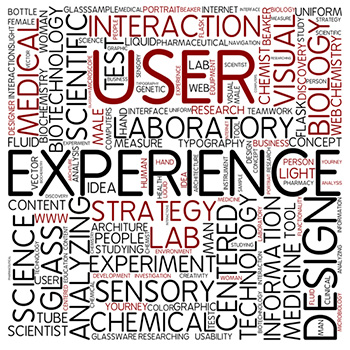Understanding Users and Customers
 Little or no affordance has been considered in the development of the systems of interaction, in our quest to access what we need and desire. Well-designed interfaces should be based on solid design principles that enhance use. Good design should communicate directly with users through the appropriate placement of visual clues, hints, and affordances. The essential function of the interface cannot be underestimated in the interactive process between man and the machine. It is the point where interaction occurs between two systems, the decisive moment of communication. Our reliance on the ability to communicate with various interfaces is increasing exponentially as we are faced with using diverse types of interfaces on a daily bases; from waking in the morning, to securing our home, driving, accessing mail, money, food, transportation, information, attending school and conducting business. A process demands knowledge of the design language, which in the case of an interface, is a visual language that uses icons and other symbols to convey meaning.
Little or no affordance has been considered in the development of the systems of interaction, in our quest to access what we need and desire. Well-designed interfaces should be based on solid design principles that enhance use. Good design should communicate directly with users through the appropriate placement of visual clues, hints, and affordances. The essential function of the interface cannot be underestimated in the interactive process between man and the machine. It is the point where interaction occurs between two systems, the decisive moment of communication. Our reliance on the ability to communicate with various interfaces is increasing exponentially as we are faced with using diverse types of interfaces on a daily bases; from waking in the morning, to securing our home, driving, accessing mail, money, food, transportation, information, attending school and conducting business. A process demands knowledge of the design language, which in the case of an interface, is a visual language that uses icons and other symbols to convey meaning.
The structure and appearance of this design(ed) language, which precipitates the flow of communication, should be the artful combination of three primary elements; the objects, icons, colour and functions that appear on the computer screen, the consideration given to organising principles, which include the interface grammar (how the design objects will be pooled to convey meaning), and qualifying values that take in account the medium’s context. The manipulation of these design language components, used to construct an interface, directly affects the resulting level and quality of communication between the user and the machine.
As designers of interactions we need to devote more time up-front in the design process, interviewing the customer (the key stakeholders and decision-makers) is a no-brainer, but we also cannot forget the users, these are the people who use the systems we design. As good interaction designers, we should be keen observers of people and curious about how these people use the systems that we create. User interviews are crucial in helping us understand why people do what they do, you need to observe to understand how others see the world. Asking questions is not enough, interviewing in context — the familiar surroundings where users usually do their business will reap greater results. Interviewing your subjects individually will avoid outside influences, it is difficult to get an accurate picture of the users interactive behaviour with the boss hanging over them.
To be successful we need to ask the right questions, put aside our own assumptions, and spend the next few hours walking in someone else’s shoes. I have a saying when conducting interviews, “Knowing Is A Barrier to Learning” — this is my mantra. I want to learn, I am the student and my role is to observe and to ask questions that will enable me to understand how to perform a specific task — I am not the expert, I am the learner.
